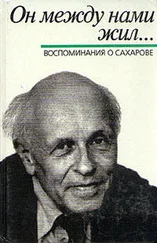Вж. например Bernard Lewis, Islam and the West (New York: Oxford University Press, 1993); Toynbee, Study of History, chap. IX, „Contacts between Civilizations in Space (Encounters between Contemporaries)“, VIII, pp. 88ff.; Benjamin Nelson, „Civilizational Complexes and Intercivilizational Encounters“, Sociological Analysis, 34 (Summer 1973), 79–105.
S. N. Eisenstadt, „Cultural Traditions and Political Dynamics: The Origins and Modes of Ideological Politics“, British Journal of Sociology, 32 (June 1981), 157 и „The Axial Age: The Emergence of Transcendental Visions and the Rise of Clerics“, Archives Europeennes de Sociologie, 22 (No. 1, 1982), 298. Вж. също Benjamin I. Schwartz, „The Age of Transcendence in Wisdom, Revolution and Doubt: Perspectives on the First Millennium B.C.“, Daedalus, 104 (Spring 1975), 3. Концепцията за аксиалната епоха произхожда от Карл Ясперс. Вж. Karl Jaspers, Vom Ursprung und Ziel der Geschichte (Zurich: Artemisverlag, 1949).
Toynbee, Civilization on Trial, p. 69. Вж. William H. McNeill, The Rise of the West, pp. 295–298, който подчертава степента, до която с идването на християнската ера „организираните търговски пътища както по суша, така и по море… свързват четирите големи култури на континента“.
Braudel, On History, p. 14: „…културното влияние се разпростира трудно, забавено от продължителните и бавни маршрути. Ако се вярва на историците, китайската мода от времето на династия Тан (618–907) е пътувала толкова бавно, че едва през XV в. е до-стигнала остров Кипър и великолепния двор на Луси-нян. Оттам тя се придвижвала с по-голямата скорост на средиземноморската търговия до Франция и ексцентричния двор на Шарл VI, където високите шапки и островърхите обувки незабавно станали популярни, наследство на един отдавна изчезнал свят — тъй както светлината на отдавна изчезнали звезди продължава да достига до нас.“
Вж. Toynbee, Study of History, VIII, 347–348.
McNeill, Rise of the West, p. 547.
D. K. Fieldhouse, Economics and Empire, 1830–1914 (London: Macmillan, 1984), p. 3; F. J. С. Hearnshaw, Sea Power and Empire (London: George Harrap and Co. 1940), p. 179.
Geoffrey Parker, The Military Revolution: Military Innovation and the Rise of the West (Cambridge: Cambridge University Press, 1988), p. 4; Michael Howard, „The Military Factor in European Expansion“, в Hedley Bull and Adam Watson, eds., The Expansion of Inter-national Society (Oxford: Clarendon Press, 1984), pp. 33ff.
A. G. Kenwood and A. L. Lougheed, The Growth of the International Economy 1820–1990 (London: Routledge, 1992), pp. 78-79; Angus Maddison, Dynamic Forces in Capitalist Development (New York: Oxford University Press, 1991), pp. 326-27; Alan S. Blinder, цитиран от New York Times, 12 March 1995, p. 5E. Вж. също Simon Kuznets, Quantitative Aspects of the Economic Growth of Nations — X. Level and Structure of Foreign Trade: Long-term Trends, Economic Development and Cultural Change, 15 (Jan. 1967, Part II), pp. 2–10.
Charles Tilly, „Reflections on the History of European State-making“, в Tilly, ed., The Formation of National States in Western Europe (Princeton: Princeton University Press, 1975), p. 18.
R. R. Palmer, „Frederick the Great, Guibert, Bulow: From Dynastic to National War“ в Peter Paret, ed., Makers of Modern Strategy from Machiavelli to the Nuclear Age (Princeton: Princeton University Press, 1986), p. 119.
Edward Mortimer, „Christianity and Islam“, International Affairs, 67 (Jan. 1991), 7.
Hedley Bull, The Anarchical Society (New York: Columbia University Press, 1977), pp. 9–13.Вж. също Adam Watson, TheEvolu-tion of International Society (London: Routledge, 1992) и Barry Bu-zan, „From International System to International Society: Structural Realism and Regime Theory Meet the English School“, International Organization, Al (Summer 1993), 327–352, който прави разграничение между „цивилизационни“ и „функционални“ модели на международно общество и стига до извода, че „цивилизационните модели на международно общество са преобладавали в историческите летописи“ и че „изглежда, няма чисти типове функционални международни общества“ (p.336).
Spengler, Decline of the West, I, 93–94.
Toynbee, Study of History, I, 149ff, 154, 157ff.
Braudel, On History, p. xxxiii.
V S. Naipaul, „Our Universal Civilization“, The 1990 Wriston Lecture, The Manhattan Institute, New York Review of Books, 30 October 1990, p. 20.
Вж. James Q. Wilson, The Moral Sense (New York: Free Press, 1993); Michael Walzer, Thick and Thin: Moral Argument at Home and Abroad (Notre Dame: University of Notre Dame Press, 1994), особено Глава 1 и 4, а за кратък преглед: Frances V Harbour, „Basic Moral Values: A Shared Core“, Ethics and International Affairs, 9 (1995), 155–170.
Vaclav Havel, „Civilization’s Thin Veneer“, Harvard Magazine, 97 July-August 1995), 32.
Х. Алкър основателно изтъква, че в статията ми за „Форин Афеърс“ аз отхвърлям идеята за световна цивилизация, определяйки понятието като „най-висше културно групиране на хора и най-общо ниво на културна идентичност, като изключим онова, което отличава човечеството от другите видове“. Разбира се, повечето учени, занимаващи се с цивилизациите, използват термина по та-къв начин. Но в тази глава аз разширявам тази дефиниция, включвайки и възможността народите по света да се идентифицират с ясно определена глобална култура, която допълва или измества цивилизацията в смисъла на западна, ислямска и синоистка.
Hedley Bull, The Anarchical Society: A Study of Order in World Politics (New York: Columbia University Press, 1977), p. 317.
Читать дальше








